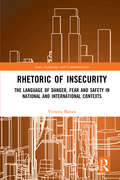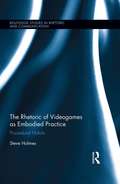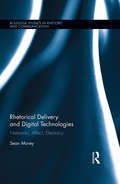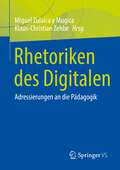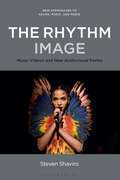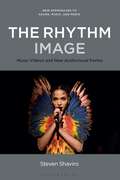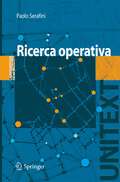- Table View
- List View
RHCSA Red Hat Enterprise Linux 9: Comprehensive Mastery for Advanced System Administration and Certification Success
by Asghar GhoriUnlock the full potential of Red Hat Enterprise Linux 9 with our comprehensive RHCSA course. From local installation to advanced user & package management, master essential Linux skills to excel in your certification and beyond.Key FeaturesComprehensive coverage of Red Hat Enterprise Linux 9, from installation to security.Detailed exploration of system processes, job scheduling, and package management.Practical exercises, do-it-yourself labs and review questions and answers.Book DescriptionEmbark on a journey through Red Hat Enterprise Linux 9, beginning with the basics of local installation and initial system interactions. Our course guides you through fundamental and advanced file management techniques, ensuring you can handle any file-related tasks with ease. Explore user management in-depth, from basic to advanced levels, providing you with the skills to manage users and groups effectively. Delve into the core aspects of the Linux operating system, including the Bash shell, process management, and job scheduling. Gain expertise in package management, both basic and advanced, to keep your system up-to-date and efficient. Understand the intricacies of the Linux boot process, system initialization, and system tuning to optimize performance and reliability. The course also covers essential networking concepts, including device management, connections, and hostname resolution. You'll learn to secure your system with SSH, firewall configuration, and SELinux. Additionally, explore storage management, local file systems, and swap configurations to ensure robust data handling. Finally, enhance your automation skills with shell scripting and containers, preparing you for modern DevOps environments.What you will learnInstall and configure Red Hat Enterprise Linux 9.Manage files and directories with advanced techniques.Implement user and group management effectively.Configure and manage network devices and connections.Secure your system using SSH, firewalls, and SELinux.Utilize containers for efficient application deployment.Who this book is forThis course is ideal for IT professionals aiming to solidify their expertise in Red Hat Enterprise Linux 9, including system administrators, network engineers, & IT managers seeking to enhance their skills for career advancement. It is also highly beneficial for aspiring Linux professionals preparing for the RHCSA certification, ensuring they gain the practical and theoretical knowledge required to excel. Developers looking to understand the server-side environment better, and DevOps engineers interested in mastering Linux for automation and orchestration tasks will find this course valuable.
Rheology of Fluid and Semisolid Foods: Principles and Applications (Food Engineering Series)
by M. A. RaoThe second edition of this fascinating work examines the concepts needed to characterize rheological behavior of fluid and semisolid foods. It also looks at how to use various ingredients to develop desirable flow properties in fluid foods as well as structure in gelled systems. It covers the crucially important application of rheology to sensory assessment and swallowing, as well as the way it can be applied to handling and processing foods. All the chapters have been updated to help readers better understand the importance rheological properties play in food science and utilize these properties to characterize food.
Rhetoric of InSecurity: The Language of Danger, Fear and Safety in National and International Contexts (Law, Language and Communication)
by Victoria BainesThis book demands that we question what we are told about security, using tools we have had for thousands of years. The work considers the history of security rhetoric in a number of distinct but related contexts, including the United States’ security strategy, the "war" on Big Tech, and current concerns such as cybersecurity. Focusing on the language of security discourse, it draws common threads from the ancient world to the present day and the near future. The book grounds recent comparisons of Donald Trump to the Emperor Nero in a linguistic evidence base. It examines the potential impact on society of policy-makers’ emphasis on the novelty of cybercrime, their likening of the internet to the Wild West, and their claims that criminals have "gone dark". It questions governments’ descriptions of technology companies in words normally reserved for terrorists, and asks who might benefit. Interdisciplinary in approach, the book builds on existing literature in the Humanities and Social Sciences, most notably studies on rhetoric in Greco-Roman texts, and on the articulation of security concerns in law, international relations, and public policy contexts. It adds value to this body of research by offering new points of comparison, and a fresh but tried and tested way of looking at problems that are often presented as unprecedented. It will be essential to legal and policy practitioners, students of Law, Politics, Media, and Classics, and all those interested in employing critical thinking.
Rhetoric of InSecurity: The Language of Danger, Fear and Safety in National and International Contexts (Law, Language and Communication)
by Victoria BainesThis book demands that we question what we are told about security, using tools we have had for thousands of years. The work considers the history of security rhetoric in a number of distinct but related contexts, including the United States’ security strategy, the "war" on Big Tech, and current concerns such as cybersecurity. Focusing on the language of security discourse, it draws common threads from the ancient world to the present day and the near future. The book grounds recent comparisons of Donald Trump to the Emperor Nero in a linguistic evidence base. It examines the potential impact on society of policy-makers’ emphasis on the novelty of cybercrime, their likening of the internet to the Wild West, and their claims that criminals have "gone dark". It questions governments’ descriptions of technology companies in words normally reserved for terrorists, and asks who might benefit. Interdisciplinary in approach, the book builds on existing literature in the Humanities and Social Sciences, most notably studies on rhetoric in Greco-Roman texts, and on the articulation of security concerns in law, international relations, and public policy contexts. It adds value to this body of research by offering new points of comparison, and a fresh but tried and tested way of looking at problems that are often presented as unprecedented. It will be essential to legal and policy practitioners, students of Law, Politics, Media, and Classics, and all those interested in employing critical thinking.
The Rhetoric of Videogames as Embodied Practice: Procedural Habits (Routledge Studies in Rhetoric and Communication)
by Steve HolmesThe Rhetoric of Videogames as Embodied Practice offers a critical reassessment of embodiment and materiality in rhetorical considerations of videogames. Holmes argues that rhetorical and philosophical conceptions of "habit" offer a critical resource for describing the interplay between thinking (writing and rhetoric) and embodiment. The book demonstrates how Aristotle's understanding of character (ethos), habit (hexis), and nature (phusis) can productively connect rhetoric to what Holmes calls "procedural habits": the ways in which rhetoric emerges from its interactions with the dynamic accumulation of conscious and nonconscious embodied experiences that consequently give rise to meaning, procedural subjectivity, control, and communicative agency both in digital game design discourse and the activity of play.
The Rhetoric of Videogames as Embodied Practice: Procedural Habits (Routledge Studies in Rhetoric and Communication)
by Steve HolmesThe Rhetoric of Videogames as Embodied Practice offers a critical reassessment of embodiment and materiality in rhetorical considerations of videogames. Holmes argues that rhetorical and philosophical conceptions of "habit" offer a critical resource for describing the interplay between thinking (writing and rhetoric) and embodiment. The book demonstrates how Aristotle's understanding of character (ethos), habit (hexis), and nature (phusis) can productively connect rhetoric to what Holmes calls "procedural habits": the ways in which rhetoric emerges from its interactions with the dynamic accumulation of conscious and nonconscious embodied experiences that consequently give rise to meaning, procedural subjectivity, control, and communicative agency both in digital game design discourse and the activity of play.
Rhetorical Code Studies: Discovering Arguments in and around Code (Sweetland Digital Rhetoric Collaborative)
by Kevin BrockWinner of the 2017 Sweetland Digital Rhetoric Collaborative Book Prize Software developers work rhetorically to make meaning through the code they write. In some ways, writing code is like any other form of communication; in others, it proves to be new, exciting, and unique. In Rhetorical Code Studies, Kevin Brock explores how software code serves as meaningful communication through which software developers construct arguments that are made up of logical procedures and express both implicit and explicit claims as to how a given program operates. Building on current scholarly work in digital rhetoric, software studies, and technical communication, Brock connects and continues ongoing conversations among rhetoricians, technical communicators, software studies scholars, and programming practitioners to demonstrate how software code and its surrounding discourse are highly rhetorical forms of communication. He considers examples ranging from large, well-known projects like Mozilla Firefox to small-scale programs like the “FizzBuzz” test common in many programming job interviews. Undertaking specific examinations of code texts as well as the contexts surrounding their composition, Brock illuminates the variety and depth of rhetorical activity taking place in and around code, from individual differences in style to changes in large-scale organizational and community norms. Rhetorical Code Studies holds significant implications for digital communication, multimodal composition, and the cultural analysis of software and its creation. It will interest academics and students of writing, rhetoric, and software engineering as well as technical communicators and developers of all types of software.
Rhetorical Delivery and Digital Technologies: Networks, Affect, Electracy (Routledge Studies in Rhetoric and Communication #27)
by Sean MoreyThis book theorizes digital logics and applications for the rhetorical canon of delivery. Digital writing technologies invite a re-evaluation about what delivery can offer to rhetorical studies and writing practices. Sean Morey argues that what delivery provides is access to the unspeakable, unconscious elements of rhetoric, not primarily through emotion or feeling as is usually offered by previous studies, but affect, a domain of sensation implicit in the (overlooked) original Greek term for delivery, hypokrisis. Moreover, the primary means for delivering affect is both the logic and technology of a network, construed as modern, digital networks, but also networks of associations between humans and nonhuman objects. Casting delivery in this light offers new rhetorical trajectories that promote its incorporation into digital networked-bodies. Given its provocative and broad reframing of delivery, this book provides original, robust ways to understand rhetorical delivery not only through a lens of digital writing technologies, but all historical means of enacting delivery, offering implications that will ultimately affect how scholars of rhetoric will come to view not only the other canons of rhetoric, but rhetoric as a whole.
Rhetorical Delivery and Digital Technologies: Networks, Affect, Electracy (Routledge Studies in Rhetoric and Communication #27)
by Sean MoreyThis book theorizes digital logics and applications for the rhetorical canon of delivery. Digital writing technologies invite a re-evaluation about what delivery can offer to rhetorical studies and writing practices. Sean Morey argues that what delivery provides is access to the unspeakable, unconscious elements of rhetoric, not primarily through emotion or feeling as is usually offered by previous studies, but affect, a domain of sensation implicit in the (overlooked) original Greek term for delivery, hypokrisis. Moreover, the primary means for delivering affect is both the logic and technology of a network, construed as modern, digital networks, but also networks of associations between humans and nonhuman objects. Casting delivery in this light offers new rhetorical trajectories that promote its incorporation into digital networked-bodies. Given its provocative and broad reframing of delivery, this book provides original, robust ways to understand rhetorical delivery not only through a lens of digital writing technologies, but all historical means of enacting delivery, offering implications that will ultimately affect how scholars of rhetoric will come to view not only the other canons of rhetoric, but rhetoric as a whole.
Rhetoriken des Digitalen: Adressierungen an die Pädagogik
by Miguel Zulaica y Mugica Klaus-Christian ZehbeDer Band nähert sich dem Thema ‚Digitalisierung’ problembeschreibend und sucht einen multiperspektivischen Zugang zu dem komplexen Forschungsfeld. Transformations- und Umbruchsrhetoriken bestimmen die Diskurse um Digitalisierung und formulieren immer politisch-gesellschaftliche Handlungsaufforderungen an Wissenschaft und Praxis. ‚Die Pädagogik‘ wird in diesem Feld als Vermittlerin adressiert, die Digitalisierung begleiten und mitgestalten soll. In den Beiträgen des Bandes wird der Frage nachgegangen wie eine reflektierte Perspektive zu diesen scheinbar alternativlosen Adressierungen gewonnen werden kann.
Rhodes Framework for Android™ Platform and BlackBerry® Smartphones (SpringerBriefs in Computer Science)
by Deepak VohraThe Rhodes framework offers several advantages over other mobile frameworks. Some of the unique features of the Rhodes frameworks are as follows: - The only smartphone framework to offer support for the Model View Controller pattern - The only smartphone framework to offer support for the Object-Relational manager -The only smartphone framework to offer offline, disconnected access to data with the Rho-Synch server - The only smartphone framework to support all mobile devices including Android, BlackBerry, iPhone, Symbian, and Windows - Provides Ruby implementations for all smartphone device operating systems -Provides a web-based Integrated Development Environment for developing mobile applications for all smartphone platforms with the RhoHub development service This book discusses developing Rhodes applications for Android and the BlackBerry platform, as these are the two most commonly used mobile platforms. For each, an application for creating a catalog and another application for getting RSS feed will be developed.
Rhomobile Beginner's Guide
by Abhishek NalwayaPart of Packt's Beginner's Guide series, this book is packed full of practical examples and screenshots to make building your application straightforward and fun. Whether you have prior experience of developing mobile applications or this is your first venture, all newcomers to Rhomobile will be able to quickly develop their own mobile application. This book is accessible for people who are completely new to Ruby, though having prior knowledge of it would be a huge advantage.
The Rhythm Image: Music Videos and New Audiovisual Forms (New Approaches to Sound, Music, and Media)
by Steven ShaviroMusic videos play a critical role in our age of ubiquitous streaming digital media. They project the personas and visions of musical artists; they stand at the cutting edge of developments in popular culture; and they fuse and revise multiple frames of reference, from dance to high fashion to cult movies and television shows to Internet memes. Above all, music videos are laboratories for experimenting with new forms of audiovisual expression. The Rhythm Image explores all these dimensions. The book analyzes, in depth, recent music videos for artists ranging from pop superstar The Weeknd to independent women artists like FKA twigs and Dawn Richard. The music videos discussed in this book all treat the traditional themes of popular music: sex and romance, money and fame, and the lived experiences of race and gender. But they twist these themes in strange and unexpected ways, in order to reflect our entanglement with a digital world of social media, data gathering, and 24/7 demands upon our attention.
The Rhythm Image: Music Videos and New Audiovisual Forms (New Approaches to Sound, Music, and Media)
by Steven ShaviroMusic videos play a critical role in our age of ubiquitous streaming digital media. They project the personas and visions of musical artists; they stand at the cutting edge of developments in popular culture; and they fuse and revise multiple frames of reference, from dance to high fashion to cult movies and television shows to Internet memes. Above all, music videos are laboratories for experimenting with new forms of audiovisual expression. The Rhythm Image explores all these dimensions. The book analyzes, in depth, recent music videos for artists ranging from pop superstar The Weeknd to independent women artists like FKA twigs and Dawn Richard. The music videos discussed in this book all treat the traditional themes of popular music: sex and romance, money and fame, and the lived experiences of race and gender. But they twist these themes in strange and unexpected ways, in order to reflect our entanglement with a digital world of social media, data gathering, and 24/7 demands upon our attention.
Rhythm, Play and Interaction Design (Springer Series on Cultural Computing)
by Brigid M. CostelloThere are rhythms of action and response to all human-computer interactions. As we click, swipe, tap and sway to their beats, these rhythms intersect with the rhythms of our everyday lives. Perhaps they synchronize, perhaps they disrupt each other or maybe they dance together. Whatever their impact our experience of these rhythms will colour our experience of an interaction design. In playful interactive applications, rhythm is especially crucial because of the role it performs in building and maintaining the precarious spirit of play. Play involves movement and this movement has a rhythm that drives the experience. But what is the character of these rhythms of play and how can they be used in the design of interactive applications? These questions are the focus of this book.Drawing on traditions of rhythmic design practice in dance, performance, music and architecture, this book reveals key insights into practical strategies for designing playful rhythmic experience. With playful experiences now being incorporated into almost every type of computer application, interaction design practitioners and researchers need to develop a deeper understanding of the specific character of rhythms within play. Written from a designer's perspective, with interviews from leading creative artists and interaction design practitioners, Rhythm, Play and Interaction Design will help practitioners, researchers and students understand, evaluate and create rhythmic experiences.
Rhythmic Advantages in Big Data and Machine Learning (Studies in Rhythm Engineering)
by Kanad Ray Anirban BandyopadhyayThe book discusses various aspects of biophysics. It starts from the popular article on neurobiology to quantum biology and ends up with the consciousness of a human being and in the universe. The authors have covered eight nine different aspects of natural intelligence, starting from time crystal found in the chemical biology to the vibrations and the resonance of proteins. They have covered a wide spectrum of hierarchical communication among different biological systems. Most importantly, authors have taken an utmost care that even school-level students fall in love with biophysics; it is simple and more of a textbook and definitely bring the readers to a world of biology and physics like never before. Most authors are experienced academicians, and they have used lucid and simple language to make the content interesting for the readers.
Rhythms in Healthcare (Studies in Rhythm Engineering)
by M. Shamim Kaiser Mufti Mahmud Shamim Al MamunThis book provides an insightful review and methodological contribution about future healthcare system. It also provides a space for creating and designing techniques for effective sensing, processing, and analysis of patient health situations based on bio-signal processing. Additionally, it discusses novel methods and algorithms which are needed to overcome limitations in current rhythmic bio-signals models. It also discusses solutions and systems needed to efficiently evaluate and process real-time data. The book is useful for wide range of users, including students, research scientists, teachers, and practitioners working in the field of heath informatics, neuroscience, biomedical engineering, and medical image processing and diagnosis.
RibbonX: Customizing the Office 2007 Ribbon
by Robert Martin Ken Puls Teresa HennigAs the most radical change to the Office interface in its history, the Ribbon replaces the traditional menu bar and toolbars and requires a new set of skills for customizing Instructions and examples demonstrate how to customize the Ribbon using VBA, XML, Access, Excel, and Word Covers the relevant aspects of security, such as trust centers and digital certificates Packed with real-world code examples that readers can immediately apply Features helpful references
Ricci Flow for Shape Analysis and Surface Registration: Theories, Algorithms and Applications (SpringerBriefs in Mathematics)
by Wei Zeng Xianfeng David GuRicci Flow for Shape Analysis and Surface Registration introduces the beautiful and profound Ricci flow theory in a discrete setting. By using basic tools in linear algebra and multivariate calculus, readers can deduce all the major theorems in surface Ricci flow by themselves. The authors adapt the Ricci flow theory to practical computational algorithms, apply Ricci flow for shape analysis and surface registration, and demonstrate the power of Ricci flow in many applications in medical imaging, computer graphics, computer vision and wireless sensor network. Due to minimal pre-requisites, this book is accessible to engineers and medical experts, including educators, researchers, students and industry engineers who have an interest in solving real problems related to shape analysis and surface registration.
Ricerca Operativa (UNITEXT)
by Paolo SerafiniIl volume tratta alcuni fra i temi più importanti della Ricerca Operativa, traendo spunti da alcuni problemi reali di carattere gestionale e cercando di dare al lettore un metodo di modellizzazione e di risoluzione, così da fornire quella professionalità che poi permetterà di risolvere casi reali abbastanza complessi. A questo riguardo la Programmazione lineare e la Programmazione lineare intera svolgono nel testo un ruolo centrale, come "utensili" principali del processo risolutivo. I problemi proposti, inizialmente presentati in forma semplice, sono poi modellati in modo sempre più complesso. Gli strumenti analitici e informatici per progettare e risolvere i modelli vengono spiegati facendo riferimento ai problemi stessi.
Richard Thieme's Islands in the Clickstream: Reflections on Life in a Virtual World
by Richard ThiemeCNN called Richard Thieme "a member of the cyber avant-garde". Digital Delirium named him "one of the most creative minds of the digital generation". Now Richard Thieme's wisdom on the social and cultural dimensions of technology is available in a single volume. "Islands in the Clickstream" ranges beyond the impact of technology to spirituality, psychological insight, and social commentary. Now that people are used to living in virtual worlds and move easily between online and offline worlds, they want to connect that experience to the deeper issues of our lives, including spiritual issues. Some examples include "Dreams Engineers Have", "The Crazy Lady on the Treadmill", and "Whistleblowers and Team Players". These essays raise serious questions for thoughtful readers. They have attracted favorable commentary from around the world and a fanatic, almost rabid fan base.* This author has become an extremely popular and highly visible talking head. He is a rare "personality" in the otherwise bland world of technology commentators.* The book leverages the loyalty of his audience in the same way Bill O'Reilly's "The O'Reilly Factor" and Al Franken's "Lies and the Lying Liars Who Tell Them" do.* The book is an easy read intended to provoke thought, discussion and disagreement.
Rick Gallahers MPLS Training Guide: Building Multi Protocol Label Switching Networks
by SyngressRick Gallahers MPLS Training Guide introduces readers to mpls concepts, installation, migration, operation, inspection, and troubleshooting. It discusses specific router and switch platforms and includes such topics as frame-mode mpls, cell-mode mpls, label distribution protocol, tag distribution protocol, label distribution protocol migration, mpls configuration, traffic engineering, mpls vpns, mpls vpn deployment models, mpls vpn routing protocol support, multi-protocol bgp, mpls vpn configurations, mpls vpn integration, and mpls vpn management. - Readers will find complete ready-to-use configurations for routers - Shows how to implement MPLS traffic engineering on a core network and optimize traffic - Great for users studying for Cisco's Implementing Cisco MPLS exam, 640-910 and written by a Cisco internetworking expert who knows everything about MPLS - Includes coverage of Cisco Systems' newly released (October 7, 2002) Multiprotocol Label Switching (MPLS) - Bandwidth Protection software package. The new architecture uses MPLS Traffic Engineering Fast Reroute and an offline application called Tunnel Builder Pro to increase resiliency at a network-wide level - Includes updated coverage of MPLS and GMPLS
Rick Sammon's Digital Photography Secrets
by Rick SammonLearn the tips and tricks used by a top photographer in the digital photography industry in Rick Sammon's Top Digital Photography Secrets. Filled with beautiful photographs and the techniques Rick Sammon used to capture them, this book offers you motivation to capture stunning photographs and the tools and tricks you need to capture them. With more than 100 techniques for use behind the camera, this book will improve the camera skills of both amateur and experienced photographers. Additionally, this book includes a chapter on post-production secrets, and a Rick Sammon DVD Guide lighting, camera, and digital photography basics. In this 1-hour DVD, Rick shows you how to get great photos using a variety of lighting sources, camera-specific techniques, and basic rules of photography.
Rick Sammon's Digital Photography Secrets
by Rick SammonLearn the tips and tricks used by a top photographer in the digital photography industry in Rick Sammon's Top Digital Photography Secrets. Filled with beautiful photographs and the techniques Rick Sammon used to capture them, this book offers you motivation to capture stunning photographs and the tools and tricks you need to capture them. With more than 100 techniques for use behind the camera, this book will improve the camera skills of both amateur and experienced photographers. Additionally, this book includes a chapter on post-production secrets, and a Rick Sammon DVD Guide lighting, camera, and digital photography basics. In this 1-hour DVD, Rick shows you how to get great photos using a variety of lighting sources, camera-specific techniques, and basic rules of photography.
Rick Sammon's Evolution of an Image: A Behind-the-Scenes Look at the Creative Photographic Process
by Rick SammonRick Sammon’s Evolution of an Image illustrates the creative photographic process from start to finish. In this book, Canon Explorer of Light Rick Sammon pulls back the curtain to prove that creating amazing photographs is a well-thought-out process that involves several stages. Comprising 50 case studies that examine photographs taken by Rick around the world in a wide variety of shooting situations, Evolution of an Image shows the power of creative thinking, getting it right in the camera, and the careful use of image processing using Lightroom. By including his outtakes— and the reasons that he considers them outtakes— Rick suggests the steps that every photographer should take in order to improve their images. Combining technical advice with tips on lighting, composition and using Lightroom, this book will motivate and encourage those looking to evolve as creative photographers and digital darkroom artists. Key features include: • More than 200 before-and-after photographs • Fully illustrated sections on wildlife, seascape, landscape, scenic, action and people photography • Screen grabs showing Rick’s Lightroom adjustments • Suggestions on working in Adobe Photoshop Lightroom as well as Adobe Photoshop • Special section on Rick’s "Sammonisms," or quick tips on getting the best in-camera image • Advice on evolving as a photographer • Inspirational photographs from Provence, the Palouse, Kenya, Antarctica, Iceland, Alaska, Mongolia, Myanmar, Colorado and more


